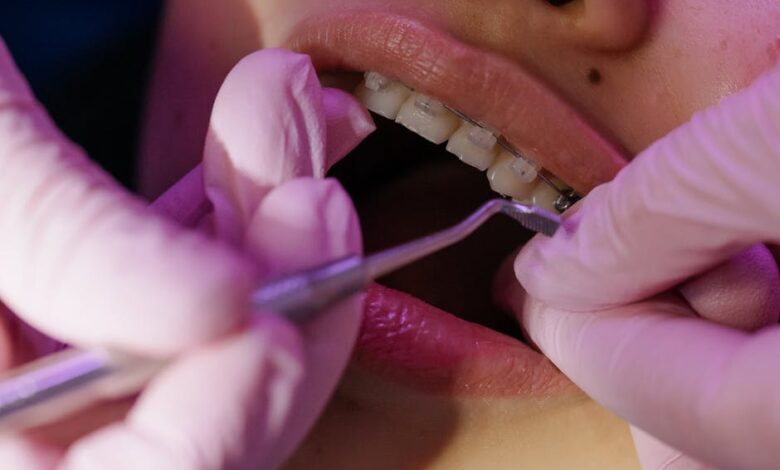A Guide to the Different Braces Alternatives

Do you have issues with your teeth such as a crooked smile, gaps, or spaces? Are you looking for a way to fix your smile more affordably? Then you should look into braces alternatives.
When we’re younger, braces aren’t always affordable. Many of us cannot afford new gadgets all the time. That’s why looking into alternatives to regular dental equipment is a good idea.
Do you want to be able to fix your teeth and smile without spending a lot of money? Well, then keep reading to learn more about various braces alternatives you can use.
Invisalign
Invisalign is a newer alternative to traditional braces. It uses clear, removable aligners instead of metal brackets and wires. Because they are virtually invisible, many people prefer Invisalign over braces.
Also, you can remove them when eating, brushing, and flossing. With this, there will be no food restrictions or special cleaning requirements.
Keep in mind though that Invisalign treatment can be more expensive than braces. This implies that it may not be suitable for all types of orthodontic problems.
Clear Aligners and Retainers
There are a few different types of clear aligners, but they all work in essentially the same way. Clear aligners are clear, plastic materials that are custom-fitted to your teeth.
They gently and gradually move your teeth into alignment over time. Most people wear them for 20 to 22 hours per day and see results within six to eighteen months.
Clear aligners are a great alternative to traditional braces for many reasons. First, they are practically invisible, so no one will know you’re wearing them unless you tell them. If you’re still not convinced, you can read about nighttime clear aligners for more info.
Second, they are removable, so you can take them out to eat and brush your teeth with ease. And third, they are much more comfortable than metal braces. Traditional braces can often rub against the inside of your mouth and irritate it.
Lingual Brackets
Lingual braces are one of the most popular alternatives to traditional braces. They are less visible than traditional braces. They work by attaching the brackets to the back of your teeth.
This makes them less noticeable, and it also means that they will not rub against your cheeks or gums. Lingual braces are made from a variety of materials, including metal and plastic. They are also available in different sizes, so you can choose the size that is right for you.
Lingual braces are more expensive than traditional braces, but they often have the same treatment time. They may take a bit longer to adjust to and can be uncomfortable at first. But, they are less noticeable and less likely to cause irritation or discomfort.
Self-Ligating Brackets
Self-Ligating brackets are a type of braces that do not need the use of rubber bands. Instead, they have a specialized door or clip that opens and closes to secure the wire in place.
This design helps to reduce the amount of friction and wear on the braces. This makes them more comfortable for patients to wear.
Self-ligating brackets are also smaller and less visible than traditional braces. This is why they are a popular choice for adults who’re concerned about their appearance.
Palatal Expanders
A palatal expander is an orthodontic appliance used to widen the upper jaw so that the top and bottom teeth fit together better. It is most often used in children before their permanent teeth have come in, but it is available for adults as well.
The expander attaches to the molars with bands. It has a screw in the middle that’s turned every day to gradually widen the jaw. The treatment usually takes about four to six months.
Palatal expanders are very effective at correcting crossbites and opening up crowded mouths. But, they can be uncomfortable for some people.
They can also make it difficult to speak clearly and eat certain foods. The good news is that these side effects are usually only temporary. In most cases, they go away once you remove the appliance.
Headgear
Headgear is one of the oldest and most common methods of orthodontic treatment. It consists of a metal frame attached to the teeth with brackets and wires. You can wear this for a few hours each day and helps to move the teeth into the correct position.
There are many different types of headgear available. Your orthodontist will recommend the best type for you based on your needs.
Many find this alternative to be quite uncomfortable to wear. The upside is that it is only worn for a short period.
Implants
Dental implants are a great alternative to teeth straightening for many reasons. First, they are much less visible than metal or clear braces. This is because they are typically placed underneath the gums, so they are not visible at all when you smile or talk.
Second, dental implants are much more comfortable than braces. This is because there are no wires or brackets that can rub against your gums and cause discomfort. The implants are also very strong and durable, so you won’t have to worry about them breaking or coming loose.
You can remove dental implants if you need to have them taken out for any reason. This is not the case with braces, which usually have to get left in for the duration of treatment.
If you are considering getting dental implants, be sure to talk to your orthodontist about your options. They will be able to help you determine if this is the right treatment option for you.
Consider Braces Alternatives Now
Braces alternatives can provide a cost-effective and convenient way to straighten your teeth. They may also be preferable for adults who want to get the smile they want without metal brackets.
So, don’t procrastinate. Start taking steps today to get the smile you deserve. Consult with an orthodontist today to learn about all your braces alternatives.
While you’re here, take a look around the rest of our site. You’ll find tons of useful content on topics from healthcare to hobbies.



